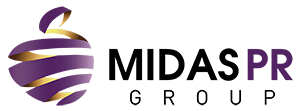As rainbow parades take to major streets worldwide, Pride Month is a prime period for spreading messages on advancing diversity and inclusion and pushing for equitable treatment.
In a business context, attempts have been made to accommodate increasingly diverse workforces since companies recognise the importance of diversity, equity, and inclusion (DEI). A report by McKinsey revealed that the more diverse a team is, the higher chance a company stands to outperform its competitors and gain an above-average profit.
This edition of Muse explores why DEI matters for the PR and communication industry.
What is DEI?
Diversity, equity, and inclusion are grouped because of their interconnectedness; the impact of DEI only emerges when every element is adopted in conjunction.
Diversity means demographic representations in the workplace, ranging from age, gender, and ethnic variety to physical ability and cognitive diversity.
Equity refers to fair treatment for all, considering individual circumstances.
Inclusion concerns how much a company embraces all members and ensures their voices are heard internally.
Why does DEI matter for a communications team?
Having diverse members and inclusive culture ensures that different perspectives, experiences, and voices are brought to the table. Though not necessarily part of their target publics, teammates of various demographics are likely to comprehend and relate to different audiences and their viewpoints. This enables them to develop fresh and creative problem-solving approaches that resonate.
Embracing individual differences helps companies better understand and engage with stakeholders from different walks of life, thus becoming proactive in building stronger connections, identifying new opportunities, and adapting to challenges.
Why is DEI important in communication planning and execution?
In its 2018 report, the Chartered Institute of Public Relations found that 65% of communicators think PR campaigns are more effective when implemented by diverse teams.
As audiences become increasingly fragmented, a diverse communication team is indispensable for crafting messages that resonate with all target groups.
Multicultural teammates are likely to recognise, challenge and address each other’s biases and stereotypes while planning strategic PR initiatives, thus avoiding inaccurate representations or understanding of their audiences.
Consequently, they can deliver messages without alienating target audiences or only addressing the majority by selecting inclusive imagery, language, or influencers.
For instance, one of Coca-Cola’s recent inclusive campaigns include sharing stories and voices of people of colour or those with disabilities. Another prime example is the “Beauty For All” message from Rihanna’s Fenty Beauty makeup brand, with branding photos dedicated to colour and shade.
To highlight their DEI commitments, brands leverage Pride Month to garner stakeholders’ support. Continue reading our next blog for tasteful approaches to supporting LGBTQ+.


